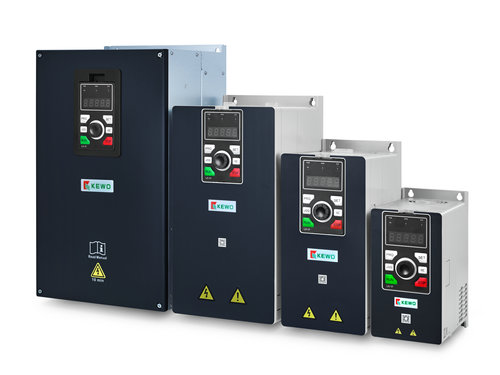

Tel:86-0755-84186866,
MP:86-18038034988
Mail:service@kewoinverter.com Skye:gary.yu88

The ascendance of digital technology has been pivotal in catalyzing a paradigm shift within the realm of water resource management, particularly in regions marred by remoteness and a scarcity of grid infrastructure. The introduction of Variable Frequency Drives (VFDs), meticulously engineered for solar-powered applications, marks a significant leap forward in the enhancement of operational efficiency, precision in control dynamics, and the systemic optimization of water distribution mechanisms.
Harnessing the effulgence of the sun, solar-powered water pumping configurations transform the incident solar energy into electrical power, which in turn propels a motor to elevate water from subterranean wells, riparian sources, or alternative reservoirs. Conventionally, these apparatuses were relegated to operate at unvarying velocities, culminating in either an inadvertent dissipation of energy or necessitating labor-intensive, manual recalibrations to accommodate the diurnal variations in solar radiance. However, the advent of digital technological interventions, most notably variable frequency converters, has been transformative in this context.
A VFD is an intricate electronic contrivance, entrusted with the regulation of motor speed and torque by modulating both the frequency and voltage of the electric input. Within the scope of solar water pumps, these devices precisely calibrate the operational state of the pump relative to the incidence of solar power. During periods of copious sunlight exposure, the VFD augments the frequency, thereby accelerating the pump's activity to optimize water throughput. Conversely, when faced with diminished luminosity or overcast skies, the device attenuates the frequency, thus ensuring continued pump functionality, albeit at a reduced velocity.
The progression towards digitalized solar pump inverters encompasses advanced algorithmic formulations, tasked with conducting Maximum Power Point Tracking (MPPT). These algorithms continuously scrutinize the voltage and current emitted from the solar photovoltaic cells, dynamically modifying the operational burden to confirm that the system is primed for optimal efficiency. Such an approach is indispensable given the inherent variability in solar energy availability; MPPT technologies safeguard the pump's operational integrity even in less than ideal conditions, thereby amplifying the system's functional span across various times of the day and in diverse meteorological states.
Further refinements in digital technology have ushered in the era of remote surveillance and directive control in the domain of solar water pumping systems. Utilizing communication infrastructures like GSM, Wi-Fi, or alternative wireless modalities, stakeholders can remotely scrutinize the system's operational metrics via smartphones or personal computing devices. This enables real-time data acquisition, encompassing parameters such as volumetric water flow, system voltage, and power conversion effectiveness. In addition, users can implement remote refinement of system configurations or engage in preemptive diagnostics, an invaluable asset in scenarios where systems are positioned in isolated or challenging terrains.
Complementing these advancements, the digital interfaces facilitate the introduction of predictive maintenance protocols. By dissecting historical data streams and operational indices, the system can prognosticate impending malfunctions or requisite maintenance interventions proactively, thereby obviating operational interruptions and enhancing the longevity of the pump.
A paramount benefit derived from the integration of digital technologies within solar water pumps is their endorsement of sustainable water stewardship. Intelligent controls can be orchestrated to tailor water utilization to the precise exigencies of demand, curtailing the propensity for resource depletion and fostering the conservation of vital water reserves. Automated dispensation protocols can be devised to dispense water congruent with specific agricultural irrigation parameters or to harmonize supply dynamics within communal water distribution frameworks.
In conclusion, the amalgamation of digital innovations with solar-powered water pumps, by means of variable frequency converters, is propagating the development of intelligent, efficacious, and eco-conscious systems capable of adapting to the ever-fluctuating environmental landscape and the nuanced requirements of end-users. By capitalizing on the potential of digital technology, these systems not only minimize energy consumption and elevate water production, but also advance remote management capabilities and signify an intellectual approach to the utilization of natural resources. These advancements underscore a substantial stride in the quest for pristine, renewable energy alternatives to concurrently address global water challenges.



 Item:7
Item:7

